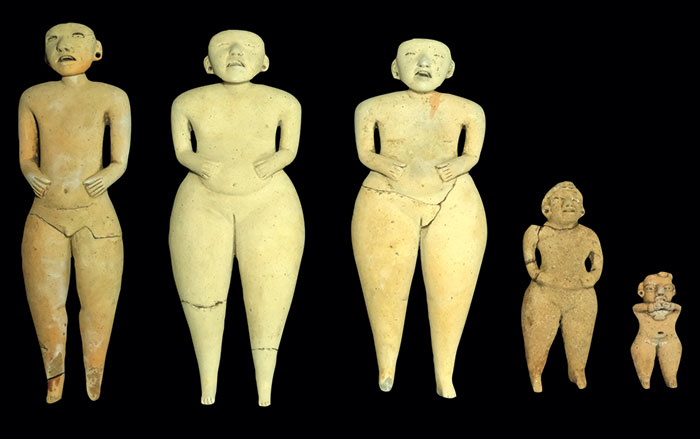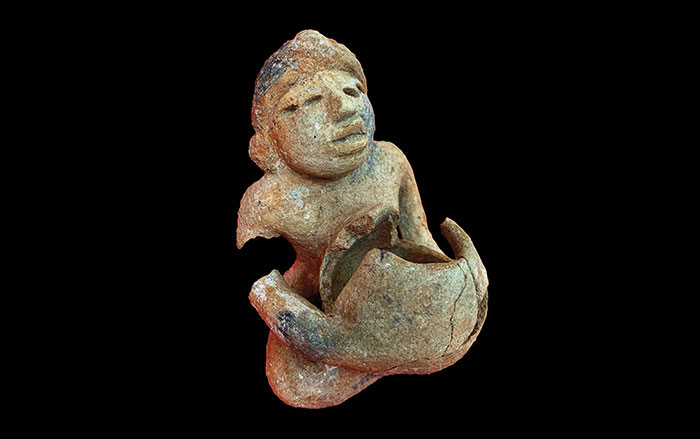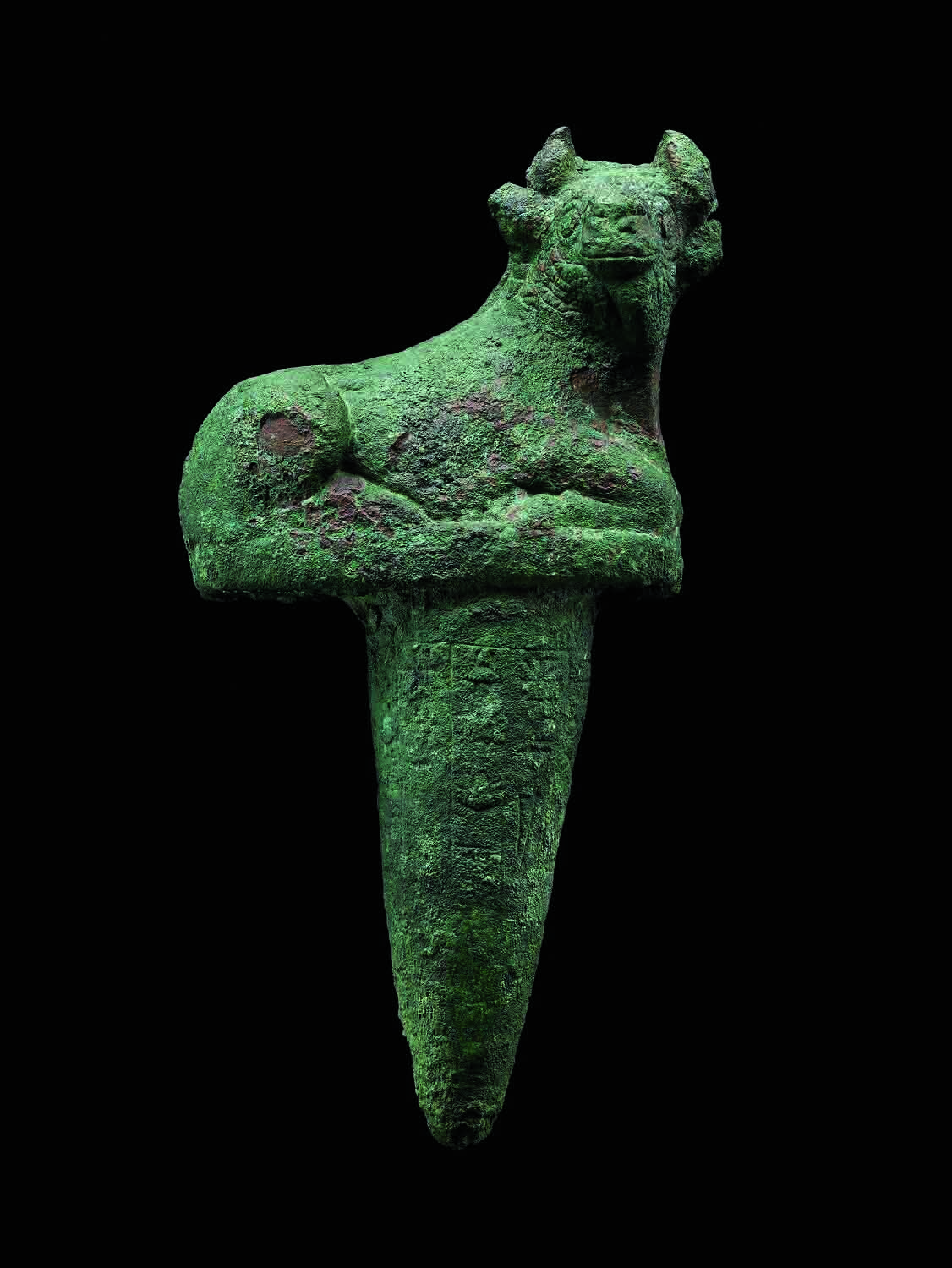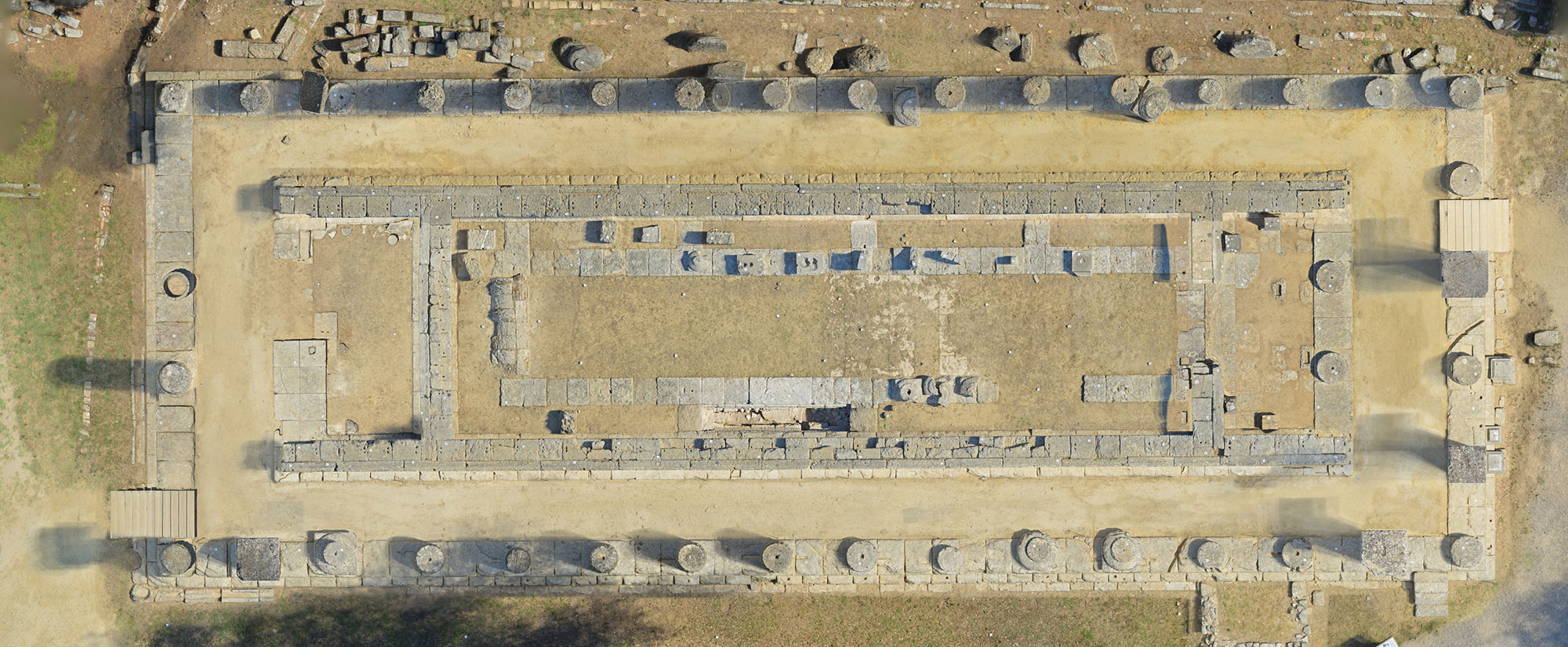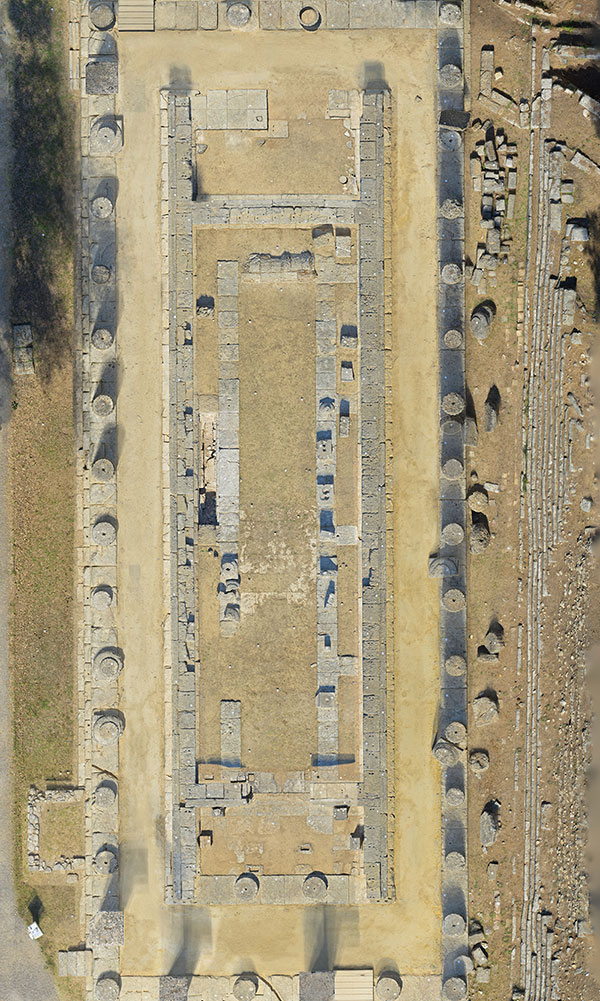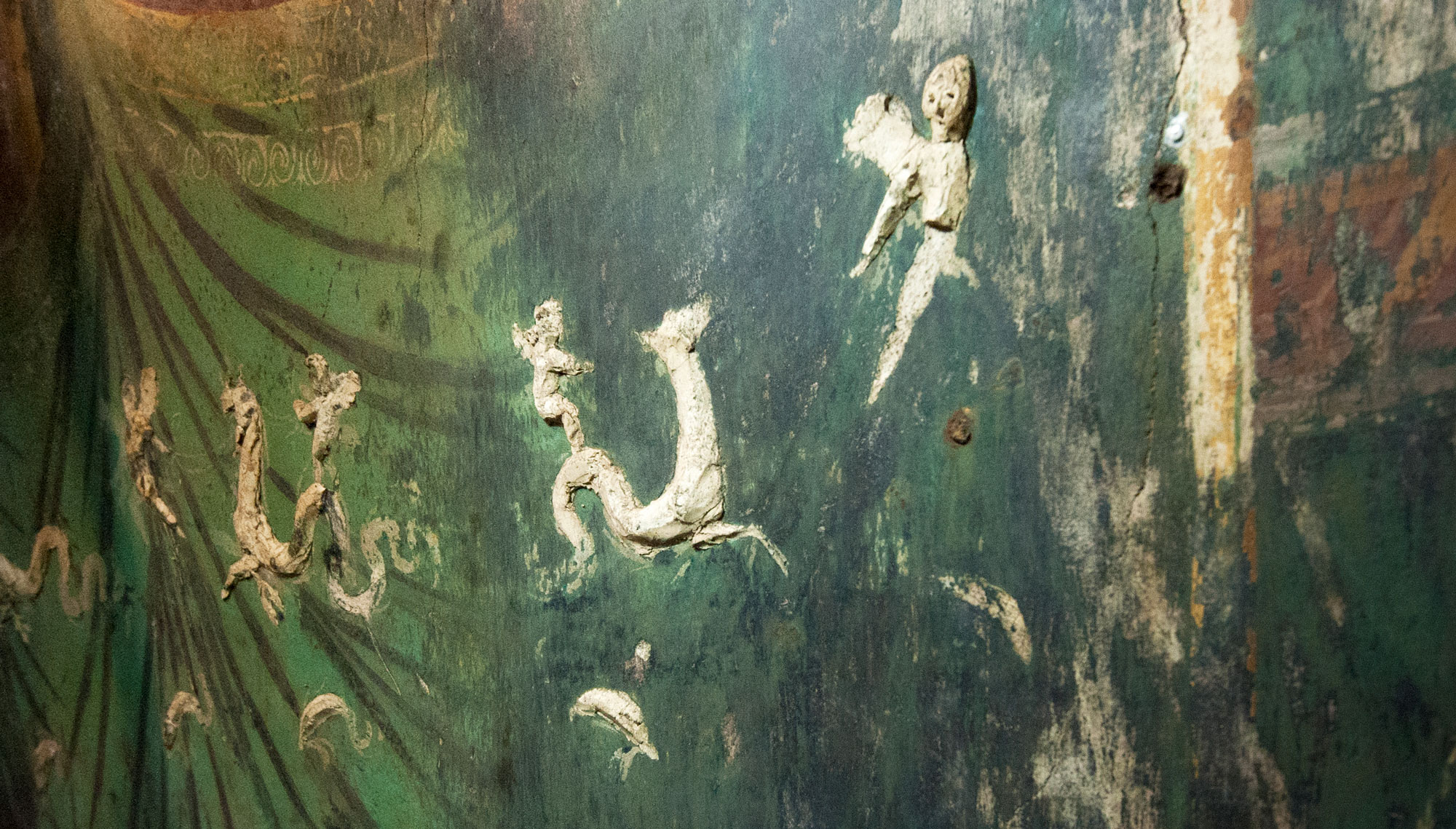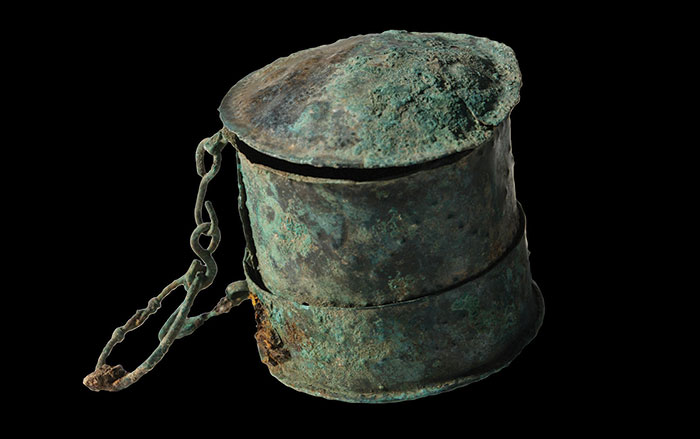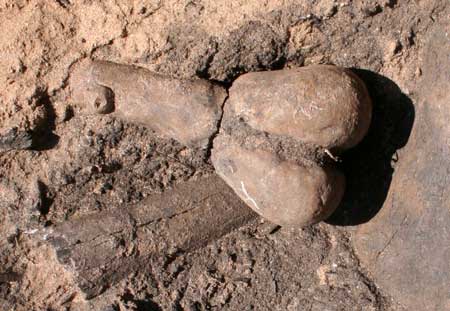
TUCSON, ARIZONA—Western Digs reports that Mark Chenault of Westland Resources found a cache of clay figurines at a pre-contact village site in the Sonoran Desert. Only a few similar objects have been found in the Southwest. It had been proposed that the “long, bulbous objects” were used in ancestor veneration or even as children’s toys, but the new research suggests that they were used as tokens of fertility employing both male and female symbolism. The phallus-shaped figures measure between 2.75 and four inches long, and sometimes have human features, such as eyes, breasts, or braided hair. “I believe that they could have been used for both human fertility and agricultural fertility,” Chenault said. “However, I think that the sexual characteristics argue more strongly for their use in human puberty or fertility rites.” He explained that the concept of sexual duality has been found in cultures from the same time period in Mesoamerica, and those ideas may have been shared by people living over a wide area. To read more about archaeology in the Sonoran Desert, go to “Early Irrigators - Tucson, Arizona.”


